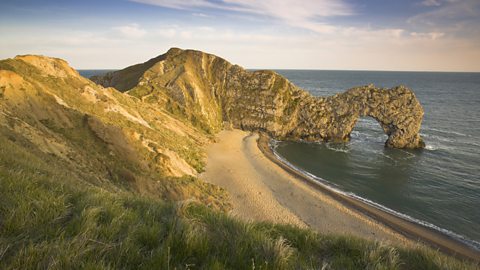Coastal erosion
Coastal landscapes are formed by a combination of erosionThe wearing away of pieces of rock, soil or other solid materials., transportation and deposition processes.

The force of the sea changes the coastal landscape. Waves get their energy from the wind.
The size of the wave is determined by:
- the speed of the wind
- the length of time the wind has been blowing
- the distance of sea it has travelled over (the fetch)
The stronger the wave, the more erosion it will cause.
The four processes involved in erosion are:
Hydraulic action
Hydraulic action is the sheer force of waves crashing against the shore and cliffs. The power of the waves forces air into cracks, compresses it and blows the rock apart as the pressure is released.
Attrition
Attrition happens when rocks and pebbles carried by the waves smash into each other, wearing each other away and gradually becoming smaller, rounder and smoother.
Abrasion
Abrasion, also called corrasionWhen rocks carried by water wear away the landscape (also called abrasion)., is the process of rocks and pebbles carried by the waves wearing away rocks as they are thrown against cliffs.
Solution
Solution (also called corrosionWhen chemicals in the water dissolve minerals in the rocks, causing them to break up (also called solution).) is when chemicals in the seawater dissolve minerals in the rocks, causing them to break up.